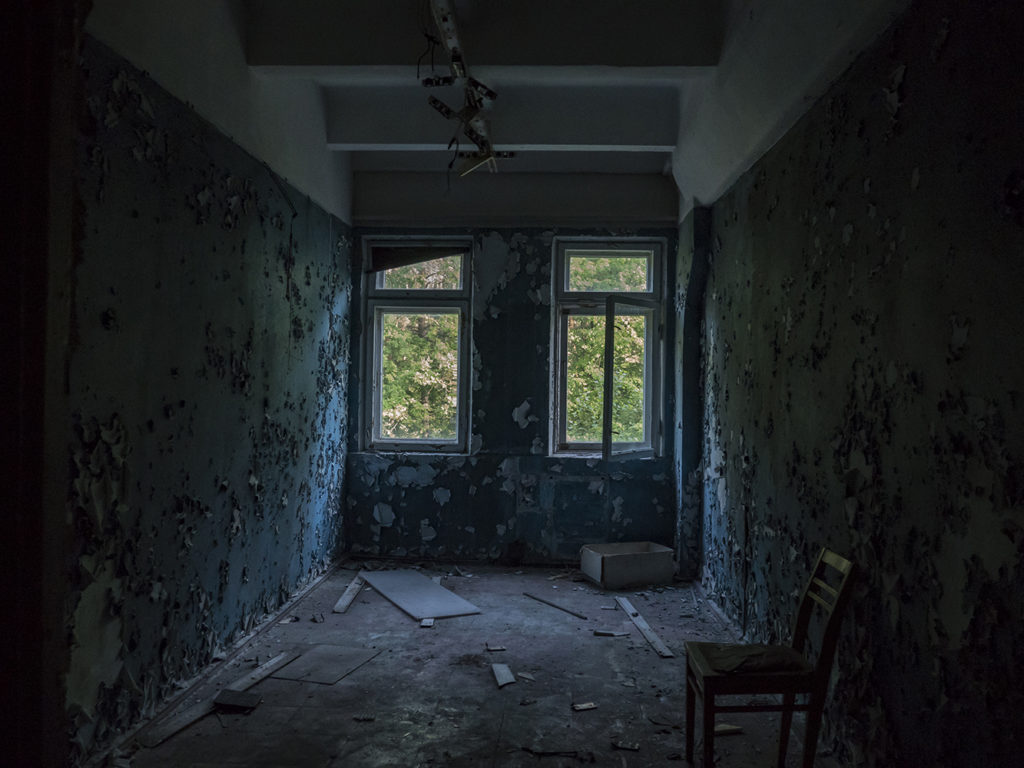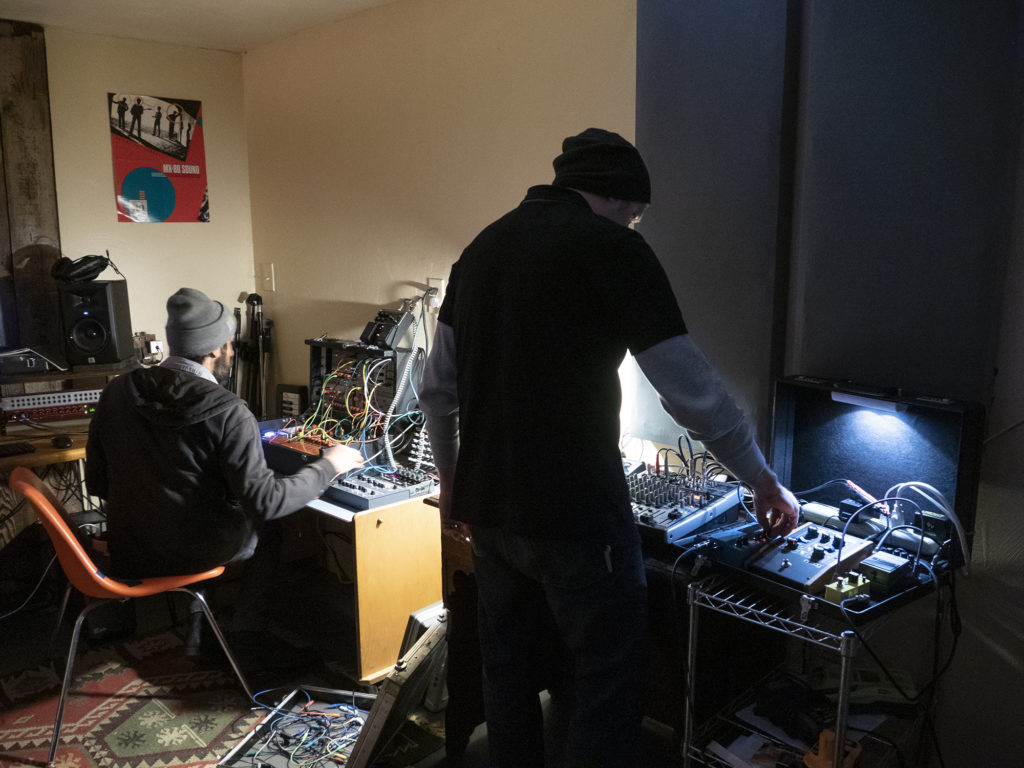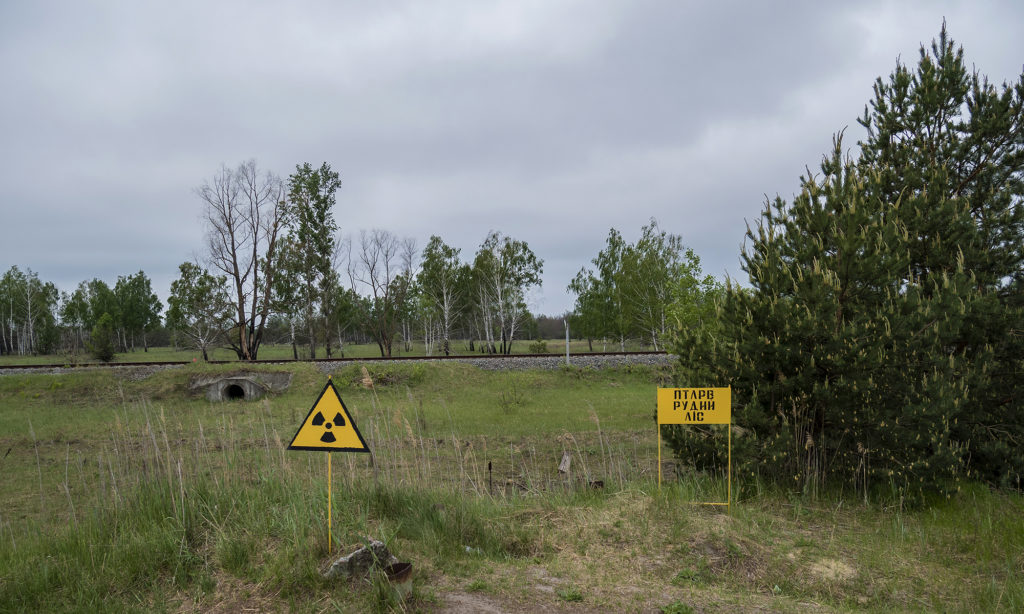Julia Oldham and Free Static at Woodshop Projects
“View of the Red Forest” an installation by Julia Oldham with a special performance by Free Static
On February 16th, ECA will host the Eugene premier of Julia Oldham’s newest film project “Fallout Dogs” and a second performance of “View of the Red Forest” by Free Static. More details here.

Julia Oldham‘s multimedia installation “View of the Red Forest” is a portrait of both the dilapidation and rebirth of the Chernobyl Exclusion Zone, combining large prints of windows looking out of abandoned buildings onto lush landscapes with video documentation of Oldham’s visit to the zone. For this project Oldham is teaming up with Free Static (ECA’s Courtney Stubbert and Chris Ruiz), a Eugene-based improvisational sound duo blending modular synth and musique concréte. Free Static will perform a live score to the film in the installation space on Saturday, January 12 at 8:00 PM.
January 12
A View of the Red Forest Installation and Performance by Free Static
Oregon State University Woodshop Projects
Located in basement Room No. 004 in Fairbanks Hall, 220 SW 26th St., Corvallis map
Opening Reception Saturday, January 12, 7-9 PM; Installation on view through January.
Performance at 8:00 PM
Eugene performance February 16th
The Eugene performance of “View of the Red Forest” also features the Eugene premier of Julia’s newest film “Fallout Dogs”. Read more info on this event here.


In April of 1986, an explosion in Reactor 4 of the Chernobyl Power Plant in the Soviet Union precipitated the worst nuclear disaster in history. The explosion created an enormous dust cloud carrying deadly radioactive isotopes which spread across Europe, affecting much of eastern Europe and Scandinavia. The the most severe contamination, however, settled in what is now known as the Exclusion Zone, a 1000 square mile area in Ukraine surrounding the power plant.
The Red Forest is a 4 square mile wooded area that received some of the highest levels of radioactive contamination resulting from the explosion. After absorbing huge doses of radiation, all of the trees died and turned a rusty red color, which is where the name of the area derives. In the clean-up effort, the forest was bulldozed and buried underground, and a new forest was planted to stabilize radioactive isotopes. The Red Forest is now green and beautiful, and both flora and fauna are flourishing in the absence of humans. It remains one of the most radioactive areas in the world.
Read more about Julia Oldham, and list to more sounds by Free Static.